
Impermanence
By Rafael Bonachela Resource Pack for Secondary School Students


By Rafael Bonachela Resource Pack for Secondary School Students
This Resource Pack will help you understand the choreographic process Rafael Bonachela undertook with Sydney Dance Company dancers to create Impermanence. You will learn about how Rafael worked with stimulus and various creative tasks to develop new movement.
There are a range of activities for you to undertake, including watching and reflecting on video excerpts, answering questions and undertaking your own creative tasks.
The pack contains a BEFORE THE SHOW section with ideas for research and discussion in the lead up to seeing Impermanence and an AFTER THE SHOW section with follow-up tasks to support learning in performance, composition and appreciation. The suggested activities in the Impermanence Resource Pack can be adapted by teachers to suit the requirements of Stages 4-6 in NSW and the equivalent in other states.
Look out for the icons on each page to guide you through the range of activities. Your teacher will help guide you through the different elements of the Resource Pack and complete the tasks as they decide.
KEY
Throughout this document, you will see the following icons:
Before the Show activity
After the Show activity
Watch Listen
Read Explore Create Write
Discuss
The information and tasks included in this Resource Pack are designed to support the delivery of dance curriculum in schools.
These elements link to the following criteria for both Stage 4 & 5 Dance, and Preliminary and Stage 6 Dance.
Dance Performance
Dance Composition
Dance Appreciation
4.1.1, 4.1.2
5.1.1, 5.1.2
4.2.1, 4.2.2
5.2.1, 5.2.2
4.3.1, 4.3.2
5.3.1, 5.3.2, 5.3.3
Dance as an artform 4.4.1 5.4.1
Dance Performance
Dance Composition
Dance Appreciation
P1.1, P1.2, P1.3, P1.4, P2.5
H1.1, H1.2, H1.3, H2.1, H2.3
P1.1, P1.2, P1.3, P1.4, P3.1, P3.2, P3.3, P3.4, P3.5, P3.6, P3.7
H1.1, H1.2, H1.3, H3.1, H3.2, H3.3
P1.1, P1.2, P1.3, P1.4, P4.1, P4.2, P4.3, P4.4, P4.5
H1.1, H1.2, H1.3, H3.1, H4.2, H4.,3, H4.4, H4.5

“Awareness of the impermanence of everything makes me feel that we must use every moment - that every moment counts – and that the transitory nature of life inspires a need for energy, urgency and radiance.”
Rafael Bonachela
Dance changes you. More than simply witnessing something beautiful, or engaging with culture, to experience dance is to be positively altered. From performances at the Joyce Theatre in New York, to the Grand in Shanghai, the Stanislavsky in Moscow and the Sydney Opera House at home, Sydney Dance Company has proved that there are no passive observers in a contemporary dance audience.
The reward of truly moving audiences, and the raw pride of sharing Australian art with the world has driven our Ensemble of 17 dancers, led by Artistic Director Rafael Bonachela, to become one of the world’s strongest forces in contemporary dance. Alongside Bonachela’s original works, our programs have featured guest choreographers like Jacopo Godani, Alexander Ekman, Gideon Obarzanek and Cheng Tsung-lung, as well as collaborations with Sydney Festival, Australian Chamber Orchestra, Sydney Symphony Orchestra, David Jones and composers Bryce Dessner, Nick Wales, 48nord and the late Ezio Bosso.

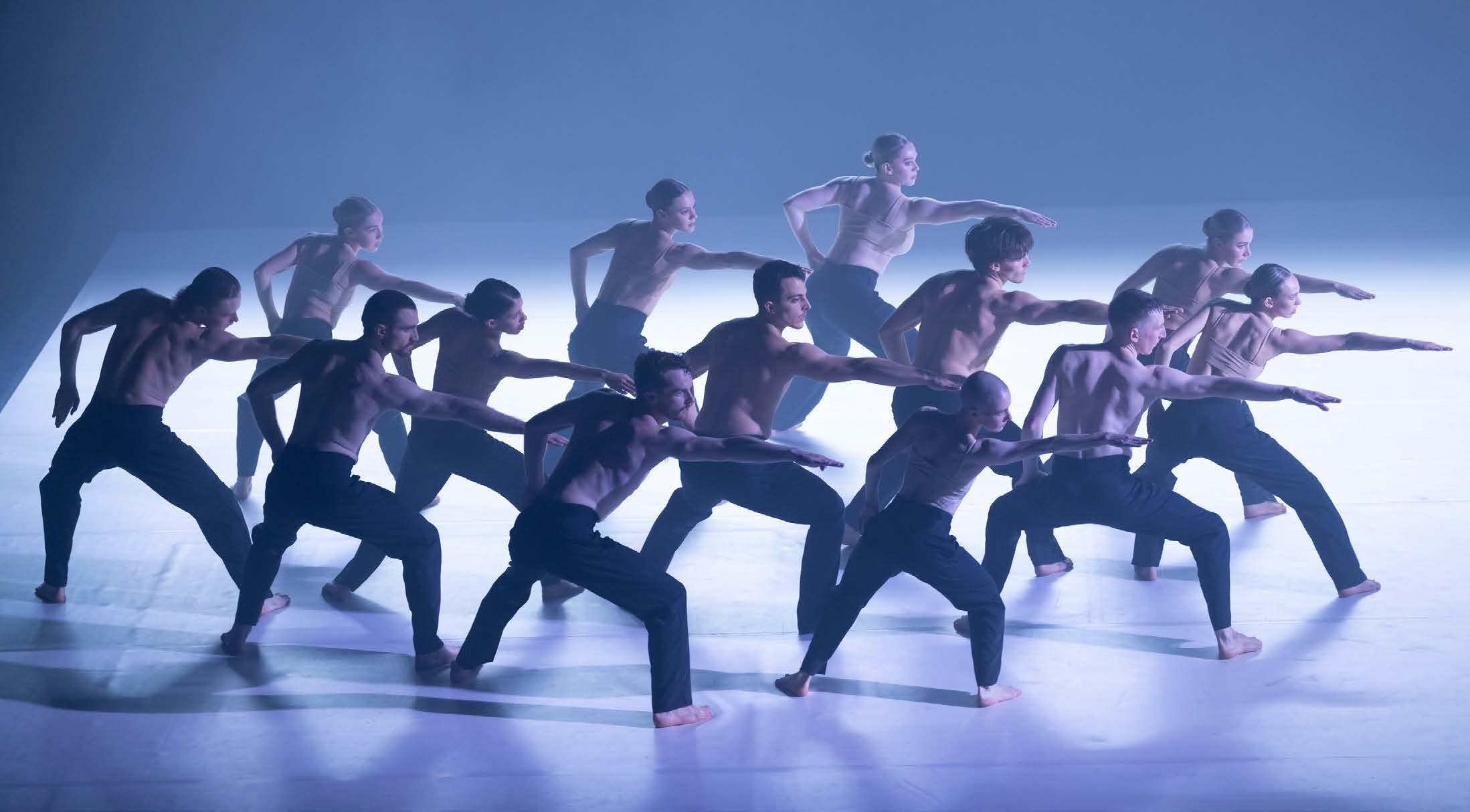
Founded in 1969 by dancer Suzanne Musitz, and soon known as The Dance Company (NSW), from 1975-1976 the Company was directed by Dutch choreographer Jaap Flier, before the appointment of Australian choreographer Graeme Murphy in 1976. In 1979 Murphy and his partner Janet Vernon instituted the defining name change to Sydney Dance Company and proceeded to lead it for a remarkable 30 years. Murphy and his collaborators created work that enthralled audiences in Australia and in extensive international touring, including being the first western contemporary dance company to perform in the People’s Republic of China.
Sydney Dance Company has been led since 2009 by Spanish-born Artistic Director Rafael Bonachela. Under Bonachela’s direction, Company has cemented its reputation as a creative powerhouse, with an acclaimed group of dancers presenting new work by Bonachela and other choreographers, designers, composers and musicians. The Company has expanded its reach into the towns and cities it visits across Australia with work for schools and local dancers.
Since 1986 the Company has been a resident of the purpose-built, and recently refurbished, studios at The Wharf in Sydney’s Walsh Bay, minutes from the city’s famed Sydney Harbour Bridge and Sydney Opera House.
20th century modern dance pioneers deviated from established dance styles to create work where “an element itself is expressive; what it communicates is in large part determined by the observer themselves” (Merce Cunningham). There is no passive contemporary dance audience. You are, as Sydney Dance Company’s Artistic Director Rafael Bonachela insists, “our most important collaborator.” This means that there is no correct response to a performance, or required learning to get the most out of it. You are only required to be present and to allow yourself to be moved.
Anything can happen. It is not mainstream nor the stuff of fairy tales; you should just be prepared to feel something. You will witness artistic risks being taken across a multitude of forms from technology to film, visual arts to design and fashion; contemporary dance brings together the work of influential artists in different fields. It is ever evolving.
Rafael Bonachela was born in Barcelona where he began his early dance training before moving to London. In 1992 he joined the legendary Rambert Dance Company.
He remained with Rambert as a dancer and Associate Choreographer until 2006 when he successfully set up the Bonachela Dance Company (BDC) to concentrate on the rapid rise of his choreographic career. As a choreographer, Rafael has been commissioned to make works for Dresden Frankfurt Dance Company, Candoco, George Piper Dances, ITDANSA Danza, Contemporanea de Cuba, Transitions Dance Company and Dance Works Rotterdam, amongst others.
In 2008, Bonachela premiered 360°, his first full-length production for Sydney Dance Company. Less than six months later, he was appointed Artistic Director, making headlines around the dance world. His vision for the Company embraces a guiding principle that has seen the repertoire grow, with the addition of commissioned dance works from Australian and visiting international guest choreographers. These works are often programmed alongside Rafael’s own creations, ensuring diversity for audiences and providing much sought after opportunities for his remarkable ensemble of dancers to be exposed to the work of some of the most in- demand choreographers of our time.
Rafael Bonachela’s internationally recognised talent has seen him work not only with contemporary dance at the highest level, but also with artists from popular culture, such as Kylie Minogue, Tina Turner, Sarah Blasko and Katie Noonan, as well as leading fashion designers Bianca Spender, Dion Lee and Toni Maticevski. Such collaborative efforts reflect the inspiration he finds and utilises from contemporary culture.
You can read more of Rafael’s biography here



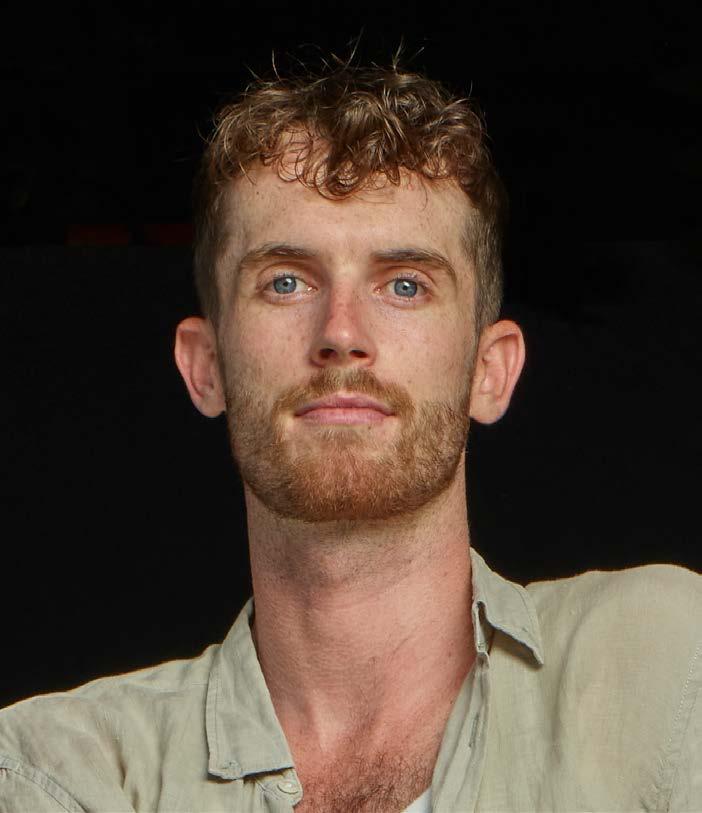







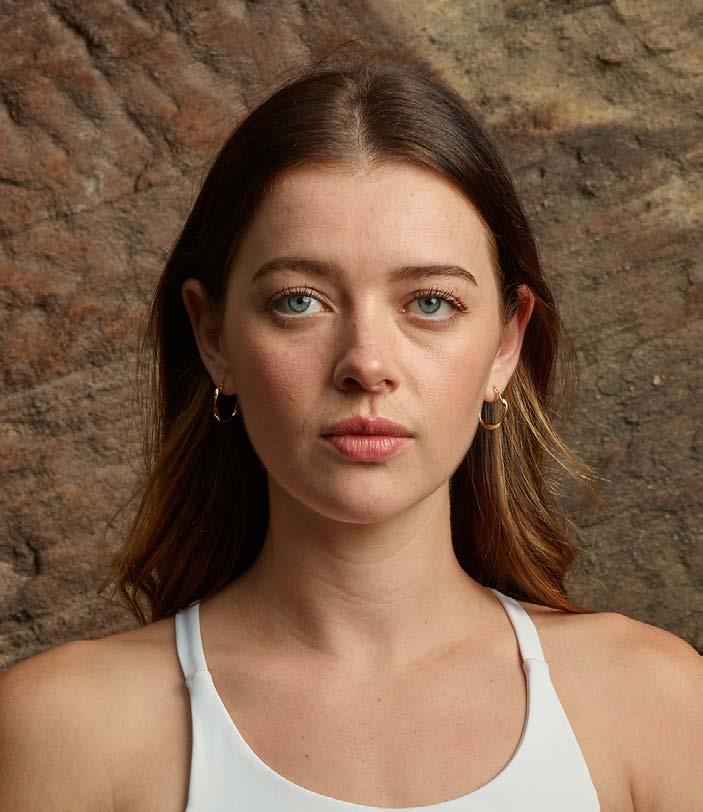

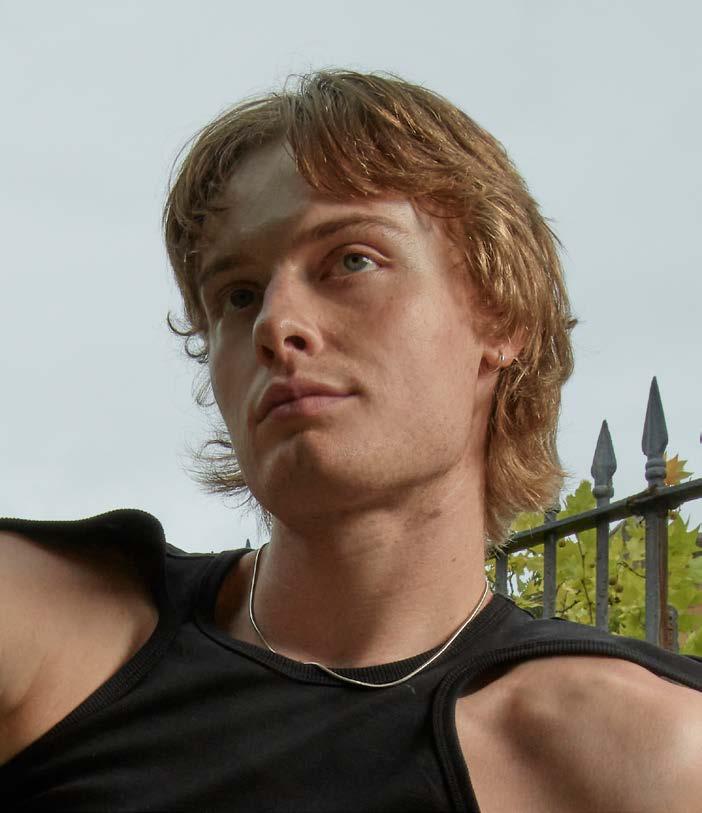



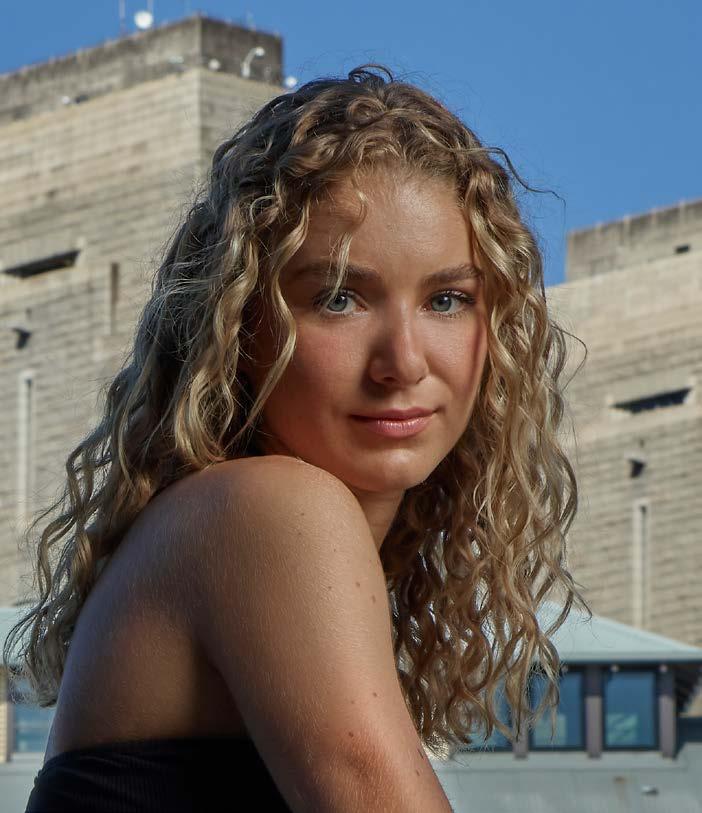









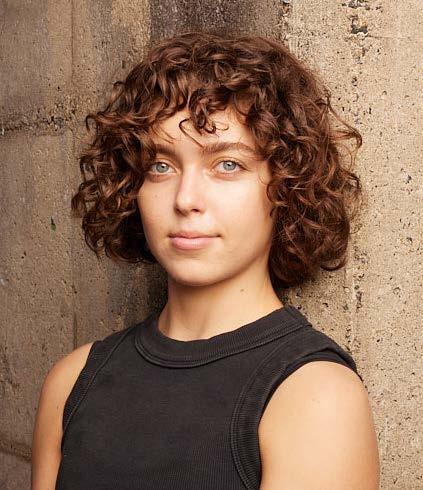







The Partridge String Quartet was formed at the Australian National Academy of Music in 2017. They have received national recognition as first prize winners of the inaugural 2019 Queensland International Chamber Music Competition, 2018 ANAM Chamber Music Competition and were the recipient of the Musica Viva Chamber Music Prize (2017). As engaging and dynamic artists, the quartet strives to connect with their audiences through their fresh and creative performances. They have collaborated with widely recognized Australian artists and are engaged in festivals, concert series and projects around Australia which have been featured on the Violin Channel as well as Cutcommon and Limelight magazines.
The award-winning Partridge String Quartet are fast becoming a force within the Australian Classical Music Scene.
Sydney Dance Company’s ensemble is joined live on stage for this School Matinee performance by the Partridge String Quartet.
Bryce Dessner’s music composition Impermanence was co-commissioned by the Australian String Quartet (ASQ) and Sydney Dance Company.
The ASQ will be sharing the 2024 performance season of Impermanence with the Partridge String Quartet.


The idea of Impermanence came about in conversation with Bryce Dessner in July 2019.
This was not my first time meeting Bryce. In 2015 I had choreographed Frame of Mind to one of his existing scores. I absolutely loved creating it, and the result was a very powerful work which audiences and critics all enjoyed. Bryce saw a run-through of the work when he came to the studio in Sydney to meet me and the dancers. He loved it, and at that moment we knew there was more we could do together, so I engaged Bryce to compose a work specifically for Sydney Dance Company, which was the start of our work together for Impermanence
The title of the work reflects on the ephemeral nature of life. I met with Bryce in Paris, where he lives, shortly after the iconic cathedral NotreDame had been badly damaged by fire. He shared thoughts he’d been having about how easily things fall apart, even structures we imagine to be eternal, and we talked about the fragility and impermanence of human life, the planet and human relationships. There’s something both so beautiful and so devastating about that and we decided that we wanted to explore this concept through music and choreography.
In November 2019, Bryce was deep in the process of writing the music when the bushfires in Australia
reached catastrophic levels. Images of fire-ravaged areas were beamed across the world, and Bryce was deeply affected by what he was seeing on TV. The images of the Australian bush on fire really entered the work and his thinking. He was profoundly moved; he had been to Australia, he had met the dancers, and there was a genuine personal connection for him.
The philosophical concept of change made me think on the ephemeral, the fleeting, things that exist only in a moment and are then transformed. For me personally, the awareness of the impermanence of everything makes me feel that we must use every moment - that every moment counts – and that the transitory nature of life inspires a need for energy, urgency and radiance.
Bryce is an incredible composer and there is an intricacy, complexity and virtuosity in the writing of the score that I love; the patterns are constantly shifting, and this really reflects how I like to work. There are layers and layers beyond the original concept, and I worked with the dancers to interrogate the emotion behind that concept. We workshopped feelings of panic and alarm, the rush of adrenaline and the juxtaposition between force and inertia. I am a choreographer obsessed with craft and this score is the perfect counterpoint to the movement we have created.

New life for Impermanence Impermanence was set to premiere in March 2020, but as the COVID-19 pandemic hit Australia, performances were cancelled and physical distancing, and working or learning from home became every-day occurrences. Just days before opening night the show was cancelled because of the NSW Government’s COVID Public Heath Orders. The ironic twist that saw a work about the concept of impermanence brought down by a pandemic was not lost on the company. Nothing, nothing is permanent.
In the aftermath of the first stages of COVID-19, Rafael decided to turn Impermanence into a longer work. He approached Bryce about this idea and the score was extended more new music and Rafael created new choreography. The result is an incredibly exciting outcome and testament to the resilience of all the artists and collaborators that bring it to the stage.

The process of remounting Impermanence in 2024
Occasionally, a piece from Sydney Dance Company’s repertoire will be selected to be performed in an encore season. Sometimes this means there will be new dancers in the Company who were not a part of the original creative development of the work.
In this instance, dancers who are new to the work will need to go through a process of learning and rehearsing the necessary choreography to rebuild the piece. This process is called remounting.
In 2024, Rafael chose to remount Impermanence as part of Sydney Dance Company’s Season Two Program, Twofold featuring Impermanence and a new work Love Lock by Melanie Lane.

After meeting Rafael and the dancers when I visited Sydney in 2018 and seeing the way Rafael’s show Frame of Mind embodied my composition Aheym, I was incredibly excited to collaborate with Sydney Dance Company and the Australian String Quartet on a score specifically commissioned for Rafael’s next work.
Rafael visited me in Paris to discuss and develop the concept for this new work, just months after the Notre-Dame fire in 2019. Living in Paris, I was deeply shaken as the world-renowned cathedral, the beating heart of the city for over 850 years and the symbol of so much art and humanity, burned and was forever transformed.
The fragility of the structures around us, both tangible and intangible, became central to my thoughts. In the following weeks and months, a catastrophic bushfire season in Australia escalated throughout the summer of 2019-2020. Images were beamed around the world on the internet and TV and I was horrified to see the devastation it caused to the bushland, the wildlife, and to people’s homes and livelihoods. Having regularly visited Australia, and spent time in Mallacoota, I was profoundly moved by the images of loss, destruction and panic that were being shared across the world. I was also deeply affected by the beauty that revealed itself in the aftermath - the hope, and the anticipation.
These events and their impacts fundamentally shaped the architecture of this work and became pivotal to the development of my composition.
With just days to go before opening night, the impact of the COVID-19 pandemic became apparent and the performances were cancelled. Devastating. However, as Sydney Dance Company worked to bring Impermanence to the stage again in 2021, Rafael contacted me to discuss extending both my composition and the choreography, reflecting on the incredible paradigm shift the world has experienced during the pandemic. What we perceived to be stable has been revealed as transient and fragile; even more so than we could ever imagine and this has influenced the extension of Impermanence
Rafael and I both wanted to end the work with a song. My friend Anonhi was delighted to collaborate with us, and I asked if we could adapt her incredibly beautiful song Another World as the closing of Impermanence. Her lyrics encapsulate perfectly everything that Rafael and I sought to achieve with this piece.
“I need another place. Will there be peace? I need another world. This one’s nearly gone.”



A Note from the Lighting Designer, Damien Cooper
Impermanence was originally designed over the summer of 2019-2020. The city of Sydney had become surrounded by a million hectares of fire ravaged land in New South Wales. Alien, frightening, surreal. The city was dark. The light was no longer brilliant, but filled with colour. Colours that one does not expect. Monotone, oranges, almost dark enough to be red. Greys, blues and greens that were so soft, there were no shadows. It was terrifyingly beautiful.
The design for Impermanence is a pure, abstracted architectural gesture that goes on its own journey throughout the show. At times it operates like a wall, at other times a horizon of a landscape, later, a window to nature, as well as a curtain that may close off that outside world. The set provides a context for the souls that inhabit it, in this chaotic and alarming world. The journey the music takes is mirrored by the movement of this single scenic element, amplified by the arresting treatments of light.
The purity of the space aims to be in harmony with the clarity and distinction of the musicality that the string quartet on stage provides.
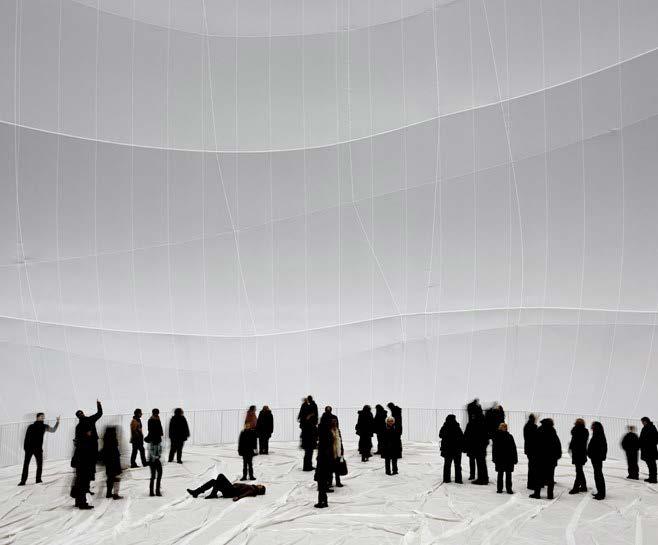

The costumes for Impermanence were inspired by the music, composed by Bryce Dessner, as well as the vivid imagery of the Australian bushfires at the end of 2019. The score is so layered, with an intensity and a sense of heaviness to it, contrasted by moments of hope, and I wanted the costumes to reflect this. I started by establishing a colour palette, with the idea of using this to find lightness in the work. I avoided using blacks and whites, or any colours that were too strong and would be too intense alongside the music, and instead landed on a palette of muted hues and soft, earthy tones. The softness of these colours also reflects the concept of hope emerging from the intensity, in the same way that the incredible images of rejuvenation followed the devastation of the bushfires.
The simplicity of the dancers’ shorts provided me with a base to work from, giving me the freedom to explore a variety of textures and structures for the top half of the costumes. Using the idea of the fire at the Notre-Dame that initially inspired Bryce’s music, and the architectural elements of the historic cathedral, I have incorporated a mixture of strong lines and draping fabrics. The softness of seeing the dancers’ skin through short-sleeves or splits along the back of a top allow for a sense of vulnerability and connection to the movement happening on stage.
The production elements of Impermanence complement and contrast each other to provide a layered and complex experience. The experiential nature of live performance is that every moment is fleeting, designed to elicit a visceral response from the audience; no two performances will be the same.
David’s set design creates an ever-evolving frame through which to view the movement, and incorporates a moving set piece that the dancers perform in front of. David has included moments of black, and moments of white fabric particles that fall behind the set piece which could be interpreted as references to ash that fell inside the Notre-Dame, damaging artwork and relics, the ash that fell through the skies in Sydney during the 2019-2020 bushfires, or the rain that finally provided relief from the fires.
The lighting plot designed by Damien creates an atmosphere of intensity and suspense and showcases the incredible physicality of the dancers, bringing to life Rafael and Bryce’s concept of impermanence.
Realising the visions of each of these collaborators to ensure that each facet works in harmony and all present together a cohesive theatrical whole, is one of teamwork and the result is an experience that is both captivating and haunting.
Both the choreography and music of Impermanence were inspired by the fragility and, as the name suggests, impermanence of human life, the planet and human relationships. Rafael Bonachela and Bryce Dessner explored these themes when they were both working in Paris in 2019, shortly after the Notre-Dame fire. Later that year, the devastating bushfires in Australia started, burning more than 17 million hectares and killing over an estimated 1 billion animals. Even as these unprecedented fires burned, the first cases of COVID-19 were being diagnosed around the world. In March 2020, COVID-19 was declared a pandemic, resulting in lockdowns, physical distancing and mask-wearing.
These three events became the backdrop and socio-cultural context for the creation of Impermanence, a work that explores beauty and devastation through music and choreography.
Using the score composed by Bryce, Rafael worked with the dancers to explore and interrogate the emotion behind the concepts; panic, alarm, the rush of adrenaline and the juxtaposition between force and inertia. To draw from how people experience fear, adrenaline rushes and the fight or flight response that often accompanies change or disaster, the dancers explored movement through the notion of a roller coaster. Playing with the feelings of suspense, fear and thrill, the dancers were able to draw on a more relatable experience and one that they envision themselves replicating.
Another way that the concept of Impermanence was explored was through the visual representation of historical buildings such as the NotreDame. Rafael and the dancers brainstormed characteristics of the Notre-Dame, using this as a starting point for movement creation, embodying the structures that can so easily disappear or change.
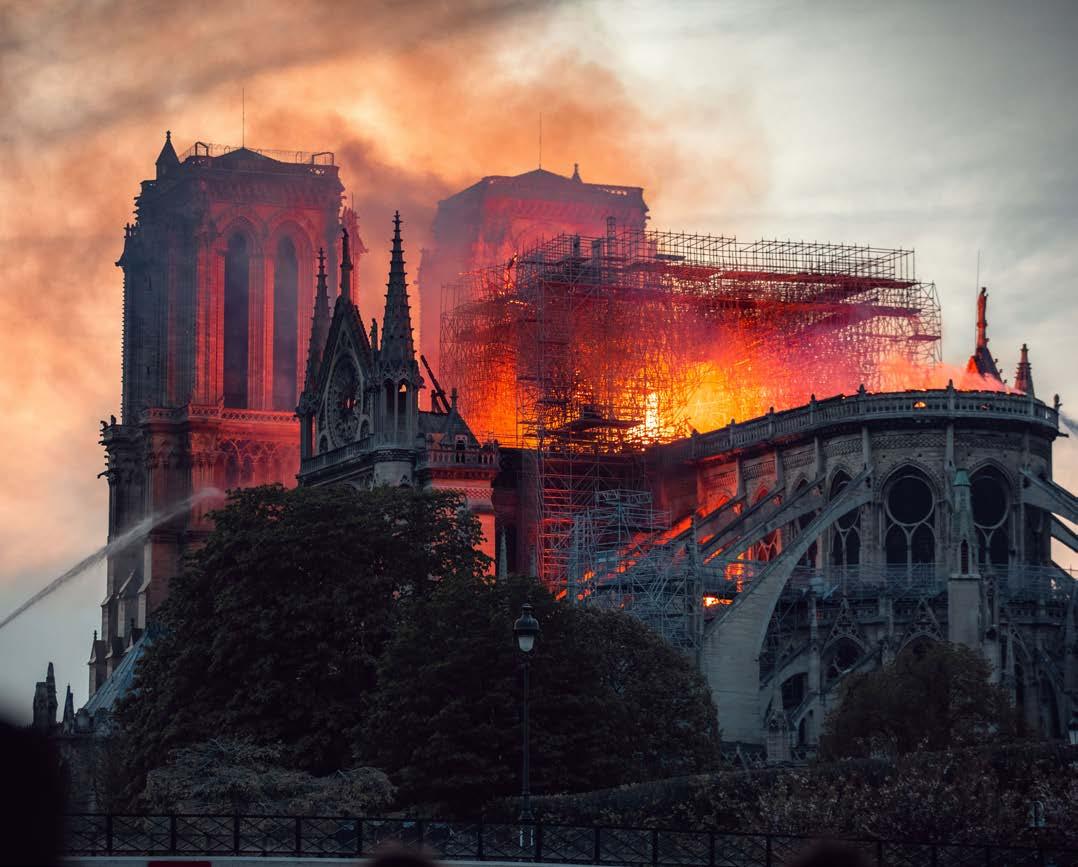

Watch this video of a preview of Impermanence

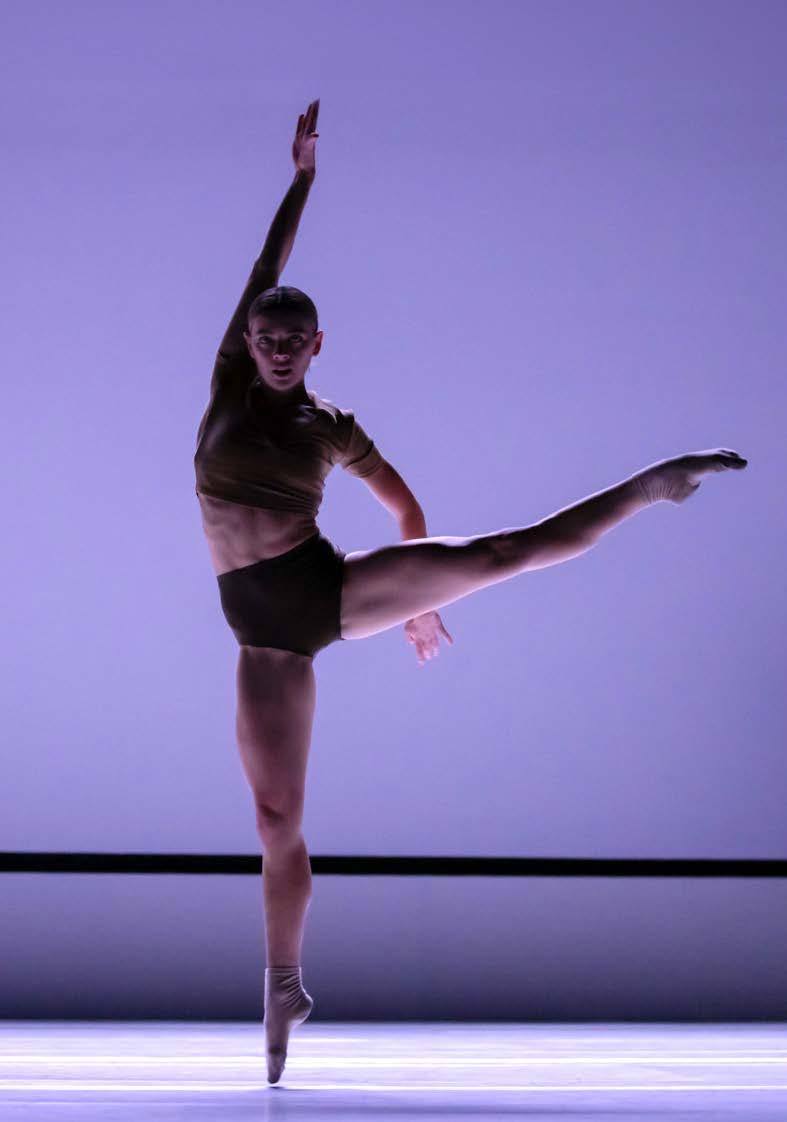
1. Watch this video and imagine you are on a roller coaster.
2. Move through the space as though you are on a ride, improvising and exploring movement as you play with the different elements of a roller coaster:
Roller coaster elements:
Tight turns Twists Steep slopes
Inversions Corkscrews Flow
Dizzying heights Spiral tracks Loop-de-loop
Sudden drop Free-fall Rotating seats
Sling shot Upside down turn
3. Select four of the roller coaster elements from above, and four pairs of body parts from below:
• Right knee + left wrist
• Right ear + left hip
• Right thumb + left ankle
• Nose + left knee
• Right shoulder + belly button
• Right fingers + left elbow
• Forehead + left heel
• Right knee + left shoulder blade
4. With your chosen elements, create 1 x 8 counts using the body parts from pair one (eg. Tight turns with right knee and left wrist). You may wish to use both body parts simultaneously, or you might choose to separate them from each other as you explore the movement. Repeat this with each of your elements to create 4 x 8 counts of movement.
5. Imagine your roller coaster is real. Draw a map of what it would look like, including the four elements you’ve selected from the first list. This is now your roller coaster pathway.
6. Using your roller coaster pathway, manipulate your phrase of 4 x 8 counts so that it travels through the space in the way your roller coaster pathway does. Be sure to include levels, changes of direction and changes of speed as you embody the pathway.
7. To develop or extend your phrase further, try incorporating some of the energy dynamics that you might experience on a roller coaster. Some suggestions are below, but brainstorm other feelings you might experience and explore these too.
Dynamics of a roller coaster:
• Gravity
• Acceleration and deceleration
• Momentum
• Changes in heights and levels
• Suspense
• Change of direction
Creative Task #1
Construction of Notre-Dame cathedral began in 1163, and wasn’t completed until 1345. The design of this historic cathedral draws from architectural characteristics of the medieval and French Gothic styles. This task utilises the lists found on page 21.
1. From List A, choose and research an architectural element as seen in the Notre-Dame
2. Create a Mind Map of your initial thoughts and research.
3. Choose a body part from List B
4. Create a short phrase (1-2 x 8 counts) exploring the architectural element from List A, using the body part from List B.
a. Think about what the architectural element looks like, what its function is, what does it represent in historical buildings. How can you “describe” this with your movement?
b. Movements don’t all need to start from standing – you could be seated or lying down
5. Repeat the above steps three more times, to create four short phrases in total (Phrases 1, 2, 3 & 4)
6. Choose two juxtaposing emotions from List C (eg, happy and sad).

7. Imagine you’re using these emotions as a filter. Apply one of these to each of your phrases in an alternating way (eg, 1: happy, 2: sad, 3: happy, 4: sad) and explore how you can physicalise these emotions.
a. Challenge yourself to do this through your movement, rather than throughyour facial expressions.
b. You might imagine how the body feels when it is happy – energetic, alive, bright, fast, bouncy – and use these ideas to “filter” your architectural phrases.
8. Combine the four phrases (with their relevant emotional filters) so they travel through the space.
9. To extend this task, join with a partner and assign each partner to be either A or B.
10. Teach each other your phrases, and intertwine them, alternating between partners for phrase 1-4, for example:
a. Partner A – Phrase 1
b. Partner B – Phrase 1
c. Partner A – Phrase 2
d. Partner B – Phrase 2
e. Partner A – Phrase 3
f. Partner B – Phrase 3
g. Partner A – Phrase 4
h. Partner B – Phrase 4
You could use any music to accompany this task, or use this Sydney Dance Company playlist as you create.
Click here to listen.
List A: Architecture element
• Basilica
• Dome
• Altar
• Cruciform
• Tower
• Aisle
• Stained Glass
• Pointed Arch
• Pinnacle
• Jamb Figures
• Spiral Staircase
• Crypt
• Mortar
• Windows
• Façade
List B: Body part
• Right shoulder
• Elbows
• Left thumb
• Right big toe
• Right palm
• Nose
• Right ball of foot
• Chin
• Forehead
• Left fingertips
• Right wrist
• Right elbow
• Left shoulder
• Both forearms
• Left ankle
List C: Emotion
• Joy
• Fear
• Panic
• Stress
• Euphoria
• Happy
• Restless
• Overwhelmed
• Irritation
• Awe
• Confusion
• Surprise
• Worry
• Dizziness
• Horror

Rafael and Bryce meet in Bryce’s studio in Paris to discuss their collaboration
Choreographic development for Impermanence commences
fire
Beginning of the Black Summer bush fires, with many fires being deemed ‘catastrophic
World Premiere scheduled Australian bushfires officially extinguished
Public Health order preventing large gatherings declare: Performance season cancelled
2021 season launch; Impermanence extended to a full length work; new premiere date announced
Impermanence tours around the south east of Australia
Impermanence begins a National tour around Australia
1. Create your own global (macro) and personal (micro) timelines from the past two years. Include social, political and environmental events, as well as events that have occurred in your life. This might include starting a new grade at school, environmental concerns in a particular area or political changes you’re aware of. Under each point on your timeline, make notes of emotions you felt as you heard or experienced these events.
2. How did these macro and micro level events influence your interpretation of Impermanence?
Brexit: The United Kingdom withdrew from the European Union
Australia goes into lockdown; international borders closed; Public Health Orders enforced
Australia’s COVID-19 vaccines started to be administered
Russia invades Ukraine with the largest escalation of the RussoUkraine war since its beginning in 2014
International premier of Impermanence in Spain and performances held in Germany and the Netherlands
Queen Elizabeth II dies at age 96 ending her 70 year reign of the UK and commonwealth realms
In response to the work Impermanence, brainstorm the elements you recall. Use as many descriptive words as possible. This might include types of movements or movement qualities, emotions elicited from the work or music, what you could see, hear or feel, lighting elements, costume design, set design, or how the dancers executed the performance.
Highlight five words or phrases from from your mind map above and use these as prompts to complete the table on page 24.
PROMPTS How is this seen throughout the work? Is it repeated, or just evident in one moment
Suspense Movement by dancers appears in “slow motion” and is repeated
What movements / qualities convey this?
Partner work and controlled lifts
How is the prompt supported by other production elements – lighting, costume, set, music etc
The music is frantic and juxtaposed with the controlled, suspenseful movements.
Suspense builds through intensity
How did the selected prompt enhance or detract from the overall work of Impermanence?
This enhanced the emotion felt, making the experience more intense.
Each year, Sydney Dance Company tours both nationally and internationally. Touring is an important way to build relationships with audiences in other locations, creating international awareness of the company and providing an opportunity for people in regional areas of Australia to experience professional contemporary dance.
1 Brainstorm who would benefit from seeing Impermanence and why
2 If you had to plan a tour of Impermanence, where would you take it?
3 You are a producer and are applying for funding to tour Impermanence to a location you’ve identified in your brainstorm. Prepare a written proposal or presentation to the funding board to argue why your tour location should be supported, and be sure to include the following elements:
Introduction:
1. What is the work? What themes does the work contain and why are these important?
2. Where should the work tour to, and who is the audience?
Body:
1. What does the work represent?
2. Why is it important for this audience to see Impermanence? What is the socio-cultural benefit of this tour? How does this performance benefit the community?
3. How are the themes conveyed through choreography, music and / or production elements. Give examples.
4. How will the costumes, set design and lighting help tell the story to audiences?
5. What type of movement should audiences expect – explain the movement qualities, and how these are presented (in solos, duos, group work, unison etc). Why does this movement help to share an important message with audiences?
6. If you feel changes need to be made to the work to make it more appropriate to be toured, what changes would you make and why?
Conclusion:
1. Reiterate why this work should this work be performed in this location, and how this would benefit the community / audience.

